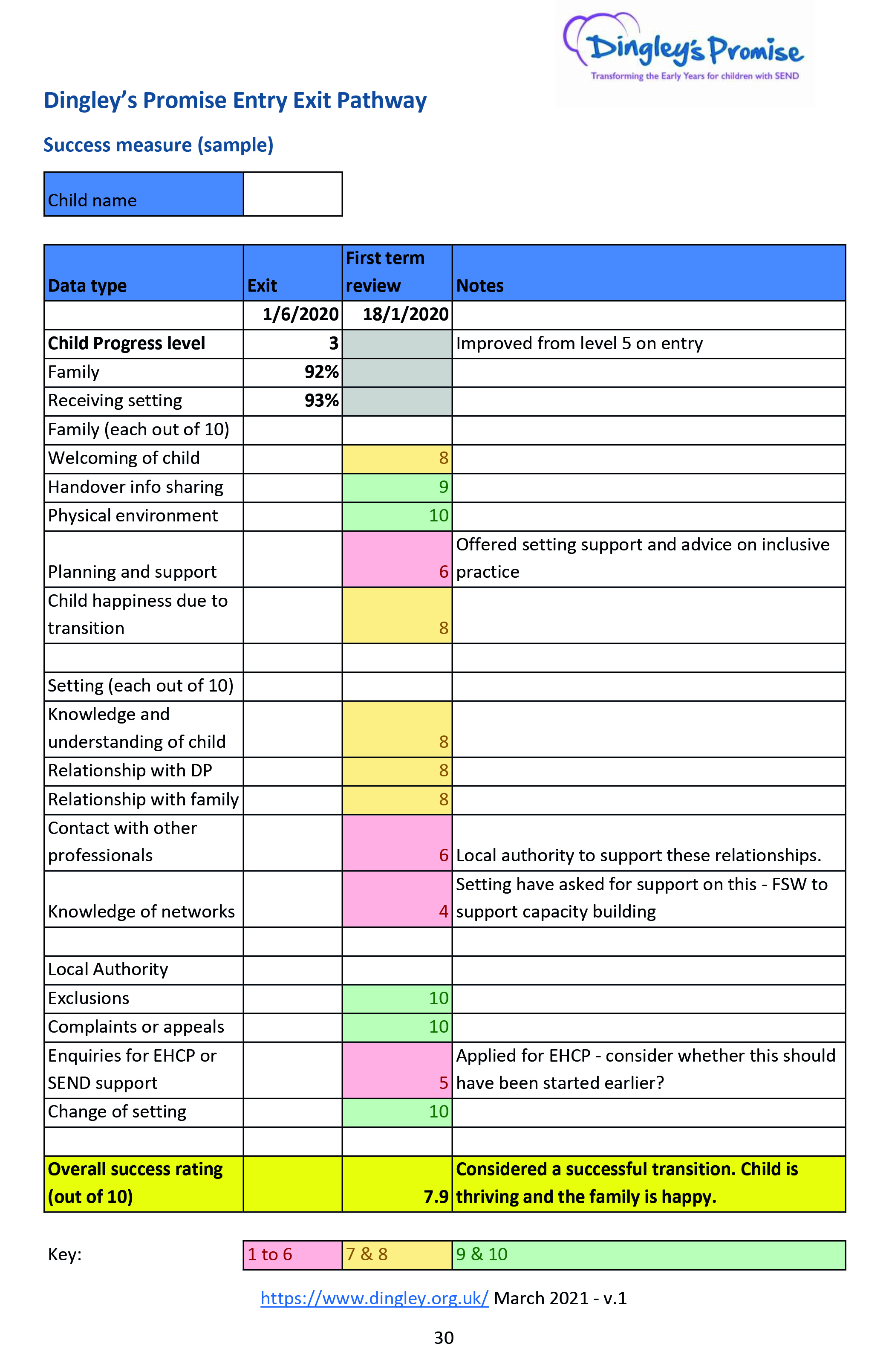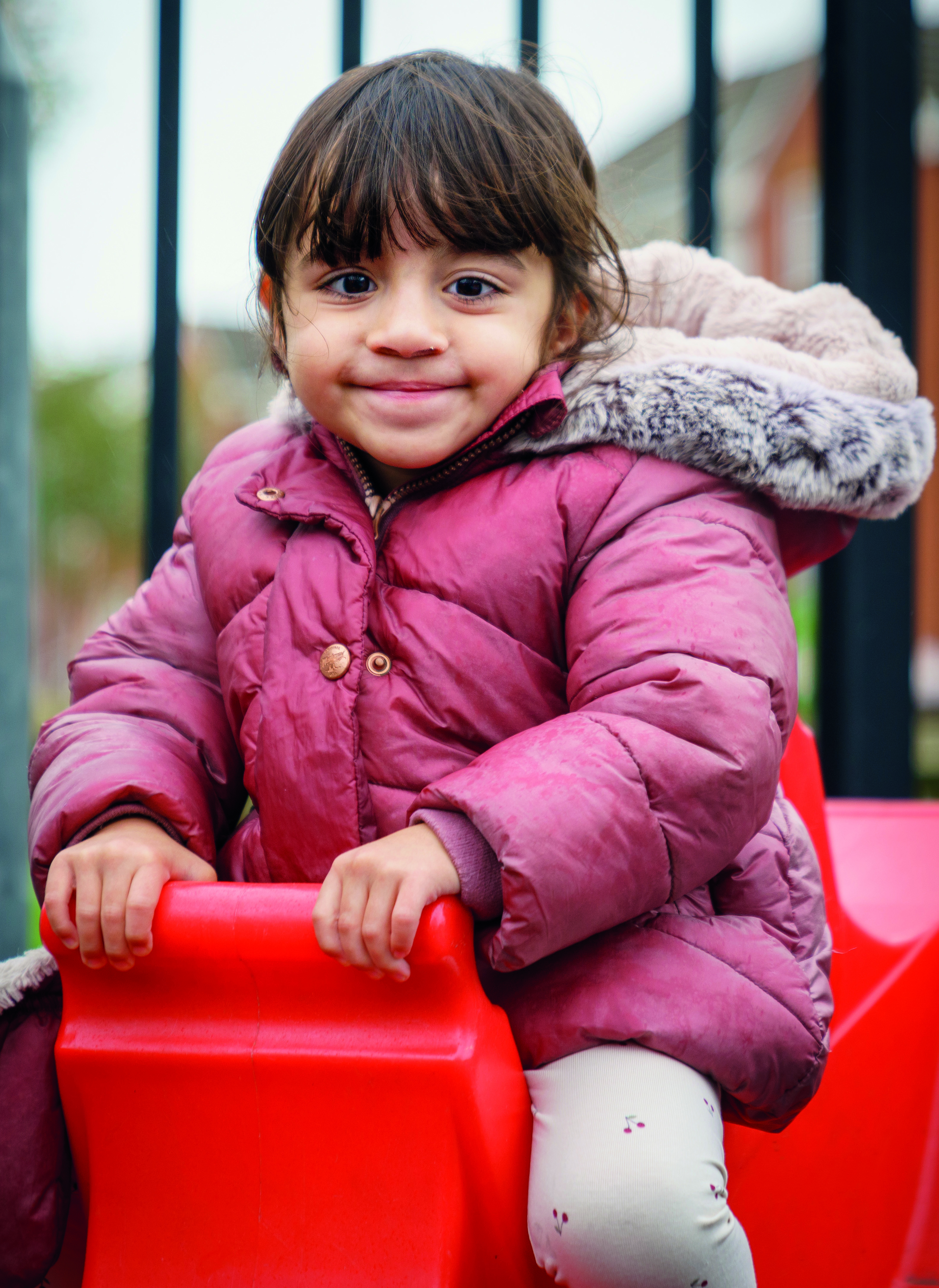
Transitions for children with special educational needs and disabilities (SEND) often need to be longer and more detailed than for other children. Children with SEND can struggle with change, and for their families the move between early years and school can be stressful and daunting as they may have to decide whether they want to go to mainstream or specialist school.
My previous article looked at key barriers affecting the success of transitions that we identified during the Dingley’s Promise transitions project (funded by the Department for Education), which was part of the Early Year SEND Partnership. This article will focus on the practical ways that education professionals can deliver high-quality transitions directly to children, with a focus on the early years setting, on the families, and also on the receiving setting.
STARTING THE HANDOVER EARLY
 It is vital to start conversations as soon as possible for transitions for children with SEND. Settings should be confident to approach schools as soon as they have been named for a child in order to set up mutual visits between the two settings. This will enable the key person in the setting to understand the environment the child will go to and make suggestions to the new setting of how they can adapt. It will also enable school staff to see the child in their existing setting, and understand them and what they need in advance of them arriving.
It is vital to start conversations as soon as possible for transitions for children with SEND. Settings should be confident to approach schools as soon as they have been named for a child in order to set up mutual visits between the two settings. This will enable the key person in the setting to understand the environment the child will go to and make suggestions to the new setting of how they can adapt. It will also enable school staff to see the child in their existing setting, and understand them and what they need in advance of them arriving.
It is also critical to start the handover early so there is enough time for the setting to work with families to create documents that truly capture the child, their needs, interests and personality. This is an important process, and ensures families feel fully engaged in the transition process.
ACTIVITIES IN THE SETTING
Settings can give extra support to children who may struggle with change by doing related activities ahead of the transitions, such as:
- Dressing up in school uniforms for imaginative role play.
- Reading stories about going to school and discussing them together.
- Using book bags which have transition support documents inside, including items tailored to any life skill or independence skills the child needs to develop.
- Creating continuity by using toys such as puppets that will also appear in the next setting.
The puppet idea has been used in Waltham Forest, where they introduced puppets to early years settings and to schools so children had a familiar friend in the new setting when they transition. In addition, they used the characters on their social media accounts to undertake transition-related activities that parents could then do with their children at home.
For children who need more support, settings can give them a social story documenting what will happen to them when they go to the new school, with photos and pictures. These should be tailored as much as possible to include the staff who will work with them and other individual information. Videos of the next setting also work well – especially if they are taken from a child’s eye level so they look familiar to children when they transition.
INVOLVING THE FAMILY
It is critical to involve the family in activities to support the child’s transition. Parents can help to ensure continuity even during holidays, so that the child feels the process is steady. This could involve:
- Driving or walking the route to the new school, familiarising the child with surroundings.
- Using transition pack materials at home such as the social story or specific activities to develop self-help and independence skills.
- Having a calendar at home for the child to refer to.
- Purchasing the uniform as soon as possible so the child can get used to it.
- Practising an early morning routine to get ready for school.
 In addition, settings can really help families to feel they are comfortable with the transition, as their feelings will have an effect on their child too. It is vital to give clear timelines so that their expectations are realistic and they know what is happening at all times. It is also good practice to offer meetings throughout the transition process – either in person, by phone or online depending on what suits the family best. These meetings can help to pick up any concerns or issues as soon as possible so that they can be resolved and not affect the ongoing transition. Throughout the process, families must be listened to and considered the expert on their children.
In addition, settings can really help families to feel they are comfortable with the transition, as their feelings will have an effect on their child too. It is vital to give clear timelines so that their expectations are realistic and they know what is happening at all times. It is also good practice to offer meetings throughout the transition process – either in person, by phone or online depending on what suits the family best. These meetings can help to pick up any concerns or issues as soon as possible so that they can be resolved and not affect the ongoing transition. Throughout the process, families must be listened to and considered the expert on their children.
During settling visits at the new setting, we found it worked well when parents stayed in a comfortable environment near to where their child was. This was reassuring to the family, who sometimes also brought younger siblings with them, and meant they were on hand if the new setting needed any advice or information.
In Swindon, family picnic days were successful in bringing families together with their peers for support. They started in the school field and then encouraged them to continue in a local park so that relationships were formed during the difficult transition period.
In Calderdale, ‘Tea and Tissues’ sessions at settings on the first day of school were a great way to support families who had sent their children off to school and were struggling on the first day. The staff at the setting were available to support them, and of course it gave them the chance to support each other too.
INVOLVING THE RECEIVING SETTING
Wherever possible, the early years setting should encourage the receiving setting to take an active role in the transition. While this will of course involve exchanging information through one-page profiles and transition booklets, and reciprocal meetings to ensure they fully understand how to support the child, there are other actions that they can do to reassure the child and family. While the early years setting can’t guarantee that the receiving setting will do these things, they should feel confident to suggest actions that have proved successful in other areas, such as:
- The new key person sending a postcard during the summer break to the family.
- The new key person recording a video saying hello and reading a story, or talking about what it is going to be like starting in their class.
- The receiving school agreeing to use a familiar item from the setting to help the child feel comfortable when they start.
- The receiving setting to create the social story and child-eye-level video.
- Holding ‘meet the teacher’ sessions (both in-person and virtual) to allow children and their families to meet the teacher in advance of the first day.
- Arranging virtual visits to the receiving setting that the new child and family can watch and take part in.
If the relationship with the receiving setting is good, the best case scenario is that one term after the move to school, families can be surveyed to understand whether the transition worked well for them. This is rare, but if it is done it can help both the early years settings and the receiving setting to constantly improve and understand what works for children and families. The Dingley’s Promise Entry Exit Pathway includes a final section with an evaluation survey for families which is useful for this purpose.
Experiences across the country show the best transitions come from partnership working between the early years setting, the family and the receiving setting. When all three groups work together, they can hold each child through the transition process and complement each other. This is dependent on respect between settings and also on centring the child and listening to the family. If all of this is in place, we can deliver transitions to all children that respond to their needs, and will truly give them the best start in the statutory school system.
Catherine Mcleod is CEO of SEND charity Dingley’s Promise
FURTHER INFORMATION









